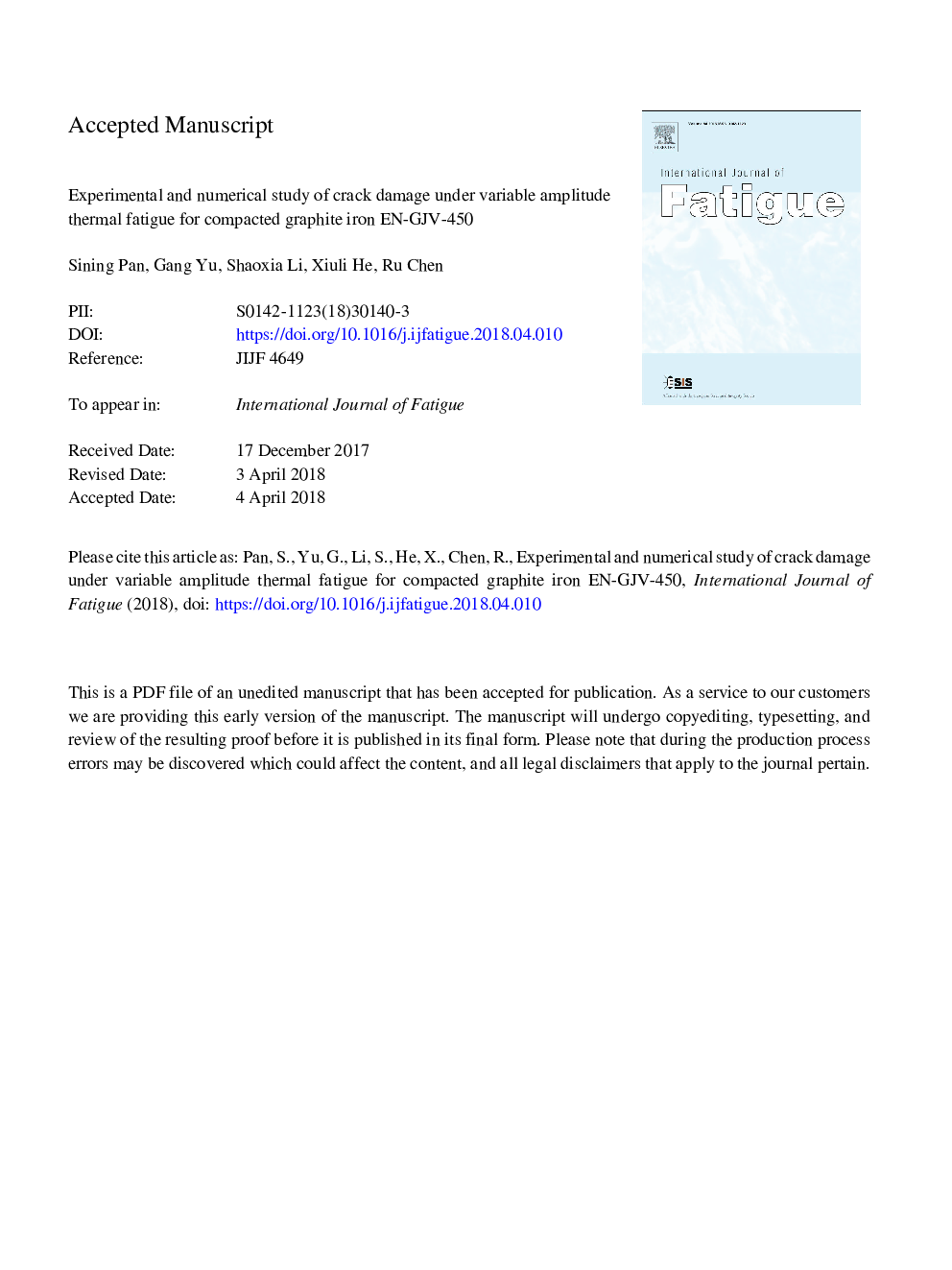| Article ID | Journal | Published Year | Pages | File Type |
|---|---|---|---|---|
| 7171389 | International Journal of Fatigue | 2018 | 17 Pages |
Abstract
Fatigue crack under variable amplitude thermal cycles is a common failure in combustion chamber components, proposing great challenges during the temperature reproduction of actual working condition. In this paper, this complicated thermal cycle was realized with pulsed laser experimentally, causing two kinds of damage such as the low cycle thermal fatigue (LCF) and high cycle thermal fatigue (HCF). A numerical model was developed to simulate the temperature, stress and strain under variable amplitude thermal cycles. The results showed that, there was good agreement between the measured temperature curve and the simulated results with different crack parameters. The observed crack depth at different cycles was consistent with the predicted ones. Furthermore, the mechanism of crack evolution under variable amplitude thermal fatigue was discussed. The calculated thermal-structural interaction depth of LCF thermal cycle was found to be larger than the HCF thermal cycle. The effect of LCF thermal loadings was associated with the initiation of major cracks, while the failure related to the superimposed HCF action was the acceleration of crack growth with a surface wedging process. This paper provides comprehensive experimental and numerical insights into the thermal damage process under variable amplitude thermal loading, showing a significant engineering value for failure analysis and design optimization of combustion chamber components.
Related Topics
Physical Sciences and Engineering
Engineering
Mechanical Engineering
Authors
Sining Pan, Gang Yu, Shaoxia Li, Xiuli He, Ru Chen,
